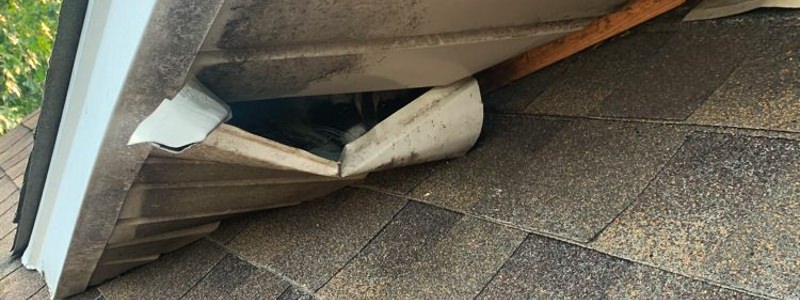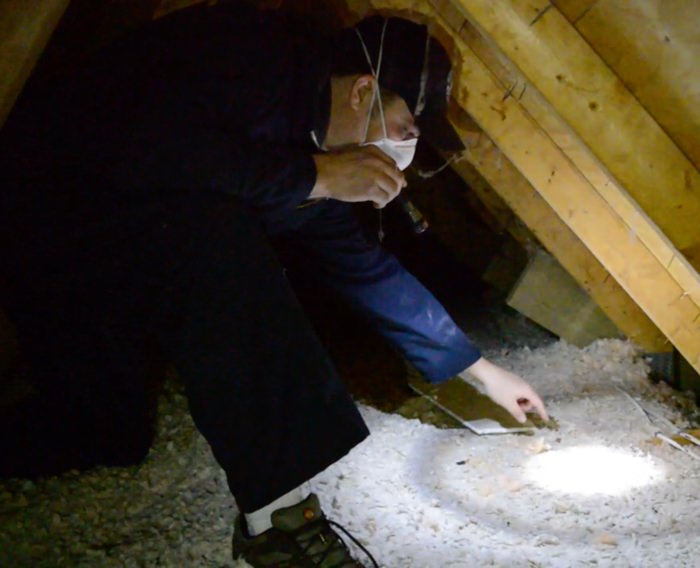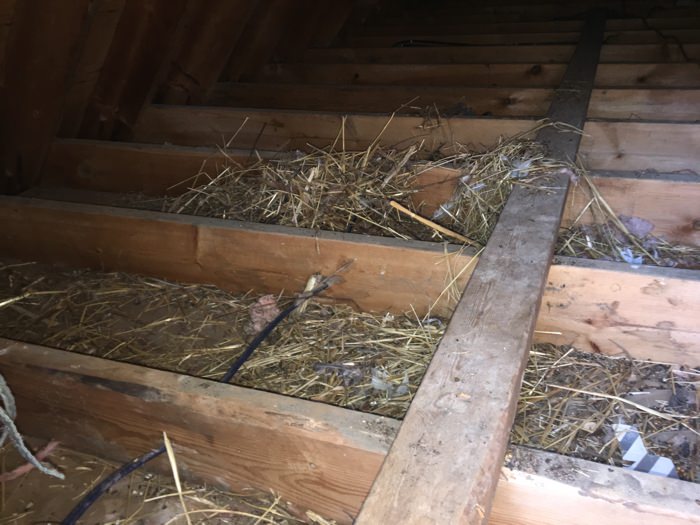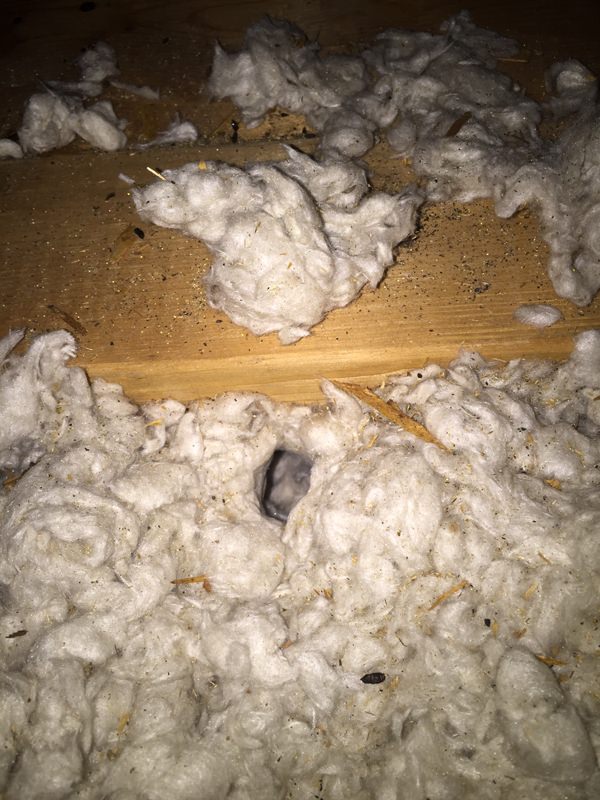
Home Buyers Beware: Inspect for Wildlife Damage Before You Buy
Posted by Jared Houliston Tuesday, October 5th, 2021 | 4,919 Reads
 Before a home is sold it must be professionally inspected to ensure it’s safe to live in, but there should be an inspection for animals and wildlife damage too.
Before a home is sold it must be professionally inspected to ensure it’s safe to live in, but there should be an inspection for animals and wildlife damage too.
Home inspections are a necessary step in the home buying process because it lets you know if there are areas of the home that need to be fixed before closing on the sale.
Home inspections usually include checking the plumbing, the heating, checking for mould, or leaks in the roof, and an array of other things to ensure the home is generally safe to live in.
What the inspections don’t include is checking for wildlife damage and/or whether wildlife are currently living in the attic.
In our experience, most home inspectors miss the signs of wildlife damage and entry points. They don’t check for existing animals or major entry points and this can be a major problem for home buyers for several reasons which we explain below.
Inspect These Parts of Home for Wildlife Damage
These are areas of a home that should be inspected for wildlife damage before buying a house:
- All parts of the attic
- Attic insulation
- Brick soffit gap
- The soffit
- Facia and Drip-edge
- Roof soffit intersections
- Flashing
- Roof vents
- Hydro electrical lines
- Gable vents
- Wall vents
- Window frames
- Shingles and eavestroughs
- The chimney
There is also a complete list of areas of a home that wildlife can get in through and that can also be damaged.
Inspect for Attic Contamination
 When wildlife have lived in an attic for a long period of time without being noticed, they can substantially and dangerously contaminate an attic with bacteria, viruses, and parasites.
When wildlife have lived in an attic for a long period of time without being noticed, they can substantially and dangerously contaminate an attic with bacteria, viruses, and parasites.
Attic contamination left by wildlife can cause an array of serious health issues in humans and pets including:
- Histoplasmosis
- Murine Typhus
- Coccidiomycosis
- Leptospirosis (urine contamination)
- Baylisascaris prosiness
- Giardiasis
Here is a comprehensive list of the diseases humans can contract from wildlife. Note: not all diseases in the aforementioned list are contracted by typical wildlife that break into a homes, namely mice, raccoons, birds, squirrels and bats.
Raccoons appear to be at the top of the list of animals that can pass infections and diseases to humans.
Before moving into any home, it is advised that you have the attic inspected for existing wildlife, and to ask the home owner if they’ve ever had wildlife removed.
If they have, find out the extent of the damage that was done, of wildlife exclusion was applied, and whether attic restoration will be needed.
Attic insulation damage
 After a wildlife infestation, your attic insulation could be severely damaged. The insulation in our attic helps regulate the temperature of the entire home. It reduces moisture in the attic and regulates heat so the home’s shingles or roof line don’t get warped.
After a wildlife infestation, your attic insulation could be severely damaged. The insulation in our attic helps regulate the temperature of the entire home. It reduces moisture in the attic and regulates heat so the home’s shingles or roof line don’t get warped.
If wildlife like raccoons and squirrels live in an attic for a prolonged period of time, a home owner can expect their attic insulation to stop performing properly. At this point an insulation top-up may be required.
Most of the attics we remove wildlife from don’t require a full attic restoration but we generally see a lack of insulation that requires a top up.
If a previous home owner had a wildlife issue, they should disclose the issue and pay for a proper restoration service.
Forms of wildlife that can contaminate an attic
Any animal that has made entrance into an attic can contaminate it. The usual culprits of attic damage and contamination are raccoons, squirrels, mice, rats, bats, and birds.
These animals are usually the ones responsible for a build-up of droppings, urine and food, and they import all sorts of debris. If this problem is left unchecked, it can cause serious health problems and put a family at risk—especially those with allergies.
The Cost to Repair Wildlife Damage
We have found wildlife problems that were ignored by previous home owners, which resulted in the new home owners having to pay the bill for the damage and removal.
The costs associated with repairing household or attic damage by wildlife can range from a few hundred to a few thousand dollars. We have seen cases where the cost to repair home damage was estimated to be more than $10,000.
Attic restoration and decontamination can also be costly too. When home owners discover their attic is damaged, they generally have no choice but to get the problem fixed. The problem is if they decide not to, but pass the problem onto the next home owners. This scenario is much more common than you think.
Insurance Won’t Cover Wildlife Damage to a Home
In Ontario, there is a program called the Ontario Wildlife Damage Compensation Program which provides “financial assistance to eligible producers whose: livestock or poultry was killed or injured as a result of eligible wildlife predation (wildlife attack) bee colonies, beehives or bee-hive related equipment was damaged by eligible wildlife” Source.
This financial assistance does not apply to homes that have been damaged by wildlife, and your insurance company is not likely to provide you coverage for damage caused by typical intruders such as squirrels, bats, mice, birds and raccoons.
Although wildlife damage is generally not included in most home insurance policies, you should call your insurance company and find out first hand how they would handle your claim.
How To Get an Inspection For Wildlife Before You Buy Your House
The first thing you want to do is talk to your real estate agent about your concerns. Have them ask the seller if wildlife currently live or have previously lived in the attic or walls of the house.
Let your agent know that you would also like to have a wildlife removal company come to the home to do an inspection. Most likely the seller will agree which will put your mind at ease, and or inform you of a problem that needs to be fixed first.
Regardless of where you live, there’s going to be a local wildlife removal company in your area that will be willing to inspect the home for damage. You can make a list of the top 5 companies you find, and give that list to the home seller.
If they’re truly interested in making sure the new buyers are happy, they’ll be more than willing to pay for the cost of an inspection, and have any damaged repaired.
Ontario Wildlife Removal Inc. provides wildlife removal and pest control in Southwestern Ontario, including Brantford, Kitchener-Waterloo, Cambridge, Guelph, London, Woodstock, Tillsonburg, Simcoe, Port Dover, Paris, St. George, Six Nations, Caledonia, Burlington, Waterdown, Oakville, Hamilton, Stoney Creek, Grimsby, & Niagara Region. Our methods are safe, humane and environmentally friendly. Call today to book your inspection.
Get a Pest Control Quote
Simply fill in your details below and we'll call you very shortly to discuss your issues.





Leave a Reply